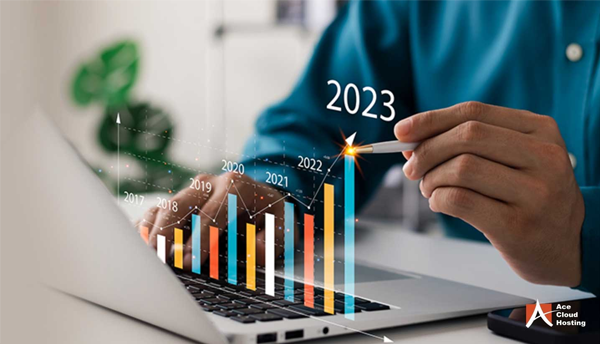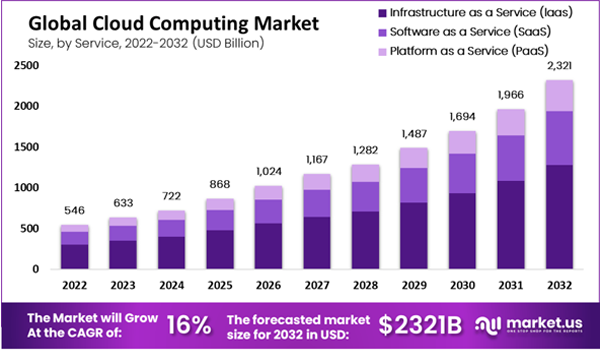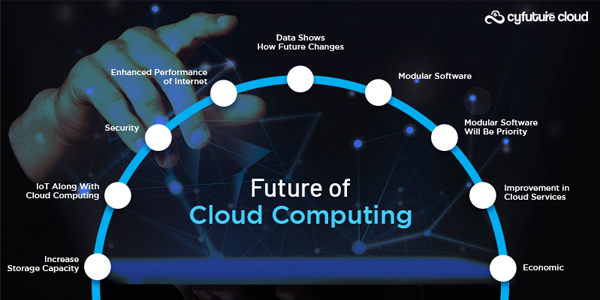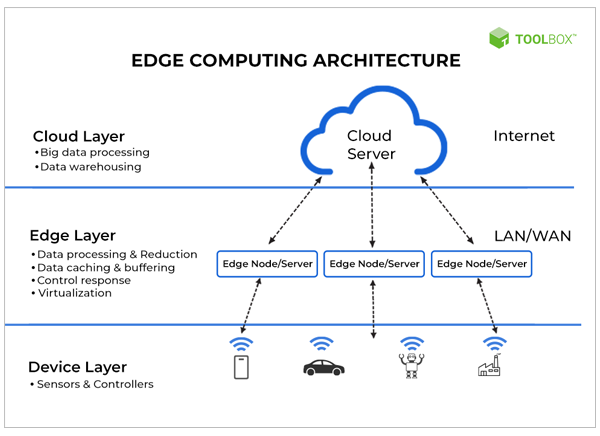The Future of Cloud Computing: Trends and Predictions

Are you tech-savvy? If yes, then you must be familiar with cloud technology, which is a major paradigm in the tech world.
This is probably one of the fastest-growing services across industries, that has almost revolutionized the way businesses store, access, and process data. Also, learn about Cloud for Business in this guide.
And did you know?
According to Cybercrime magazine, the total data stored in the cloud is expected to reach 100 Zettabytes by 2025, which would almost be 50% of the whole’s world data.
As The technology continues to evolve at a rapid pace with some latest advancements in the blockchain, artificial intelligence (AI), machine learning (ML), and all.
The legit question to ask here is “What does the future hold for cloud computing”?

Well, this guide will explore some of the major trends and predictions in cloud computing and how cloud services consulting can help a business build a secure system.
But First, What Exactly is Cloud Computing?
The term “Cloud computing” was first coined by George Favaloro in 1996. Which is basically an on-demand delivery of the IT resources — over the internet.
This gives businesses some fine computing resources, such as databases, storage, servers, analytics, or even software solutions. That can be accessed remotely with just a stable internet connection.
These resources then further help organizations with scalability and flexibility without the need to get a physical space.

And, What are the Benefits of Cloud Technology?
Cloud computing brings several forthcoming benefits to individual users, emerging businesses, and established ones. Some of them include:
- Privacy and security.
- Unlimited cloud storage.
- High flexibility and scalability.
- Easy accessibility to the users.
- Providing data backup and recovery.
- No need for any physical infrastructure.
- And, cost-effectiveness due to its pay-per-use model.
Do You Know?
According to Exploding Topics, The cloud application market is estimated to reach $168.6 billion by 2025. (Which is massive, by the way)
So, What are the Top Cloud Computing Trends of the Near Future?

The major cloud computing service providers Google, Microsoft, IBM, Amazon, etc. have been working rapidly to make this technology more efficient in the business field. Below are mentioned some of the key trends in cloud computing:
AI and ML
Artificial intelligence and cloud technology are probably one of the most trending technologies in cloud computing. Many cloud computing services are investing heavily in these technologies for self-automation, high data security, personalized cloud, and privacy.
Where. Amazon’s AWS DeepLens camera and Google Lens can be used as a great example of AI and machine learning utilization.
Data Security
Security is always a top priority for any organization. This is where cloud security comes into play as a secure service with many security protocols and data encryption algorithms.
This minimizes the potential threats of data leaks, data deletion, and unauthorized amendments in the system with the help of security testing, backups and thoroughly reviewing privacy policies.
Internet of Things (IoT)
IoT is another major technology that is revolutionizing cloud computing services. This includes the proper deployment of a handful of useful sensors to extract some valuable insights about the data. Which later can be used to make data-oriented, precise business decisions.
Some of the key benefits of integrating IoT devices with cloud-based platform include:
- Excellent scalability
- Cross-border accessibility
- Reduced administrative costs
- Data redundancy and recovery
- Enhancement of cross-platform compatibility
- And, simplified device management
Edge Computing

Edge computing includes data storage, processing, and further analysis, which is usually done close to the main source.
This works in real-time and brings several forthcoming benefits to the table, such as reduced latency, enhanced privacy, increased efficiency, and security along with a high rate of data transmission.
Do You Know?
According to Gartner, nearly 5.6 billion IoT (Internet of Things) devices have utilized edge computing to process data.
Disaster recovery and backup
Cloud computing can also play a key role in restoring critical business information during any unfortunate event. This minimizes the risk of huge data lose due to the server crash by providing a strong disaster recovery and backup plan.
Low or No Code Cloud Solutions
The major advancements in the technical field are also indicating the low or no code cloud solutions. Where businesses can create some advanced software or even utilize the AI and its subdomains to develop websites, apps, and services without any technical background.
Bottom Line
Cloud computing is the core of digital transformation. And as the technology matures, this will revolutionize the future of business management and data privacy.
And these are just a handful of trends, some other major advancements include the Blockchain, Cloud Gaming, Quantum Computing, etc. that will surely be going to provide high scalability options with some cost-effective opportunities.











